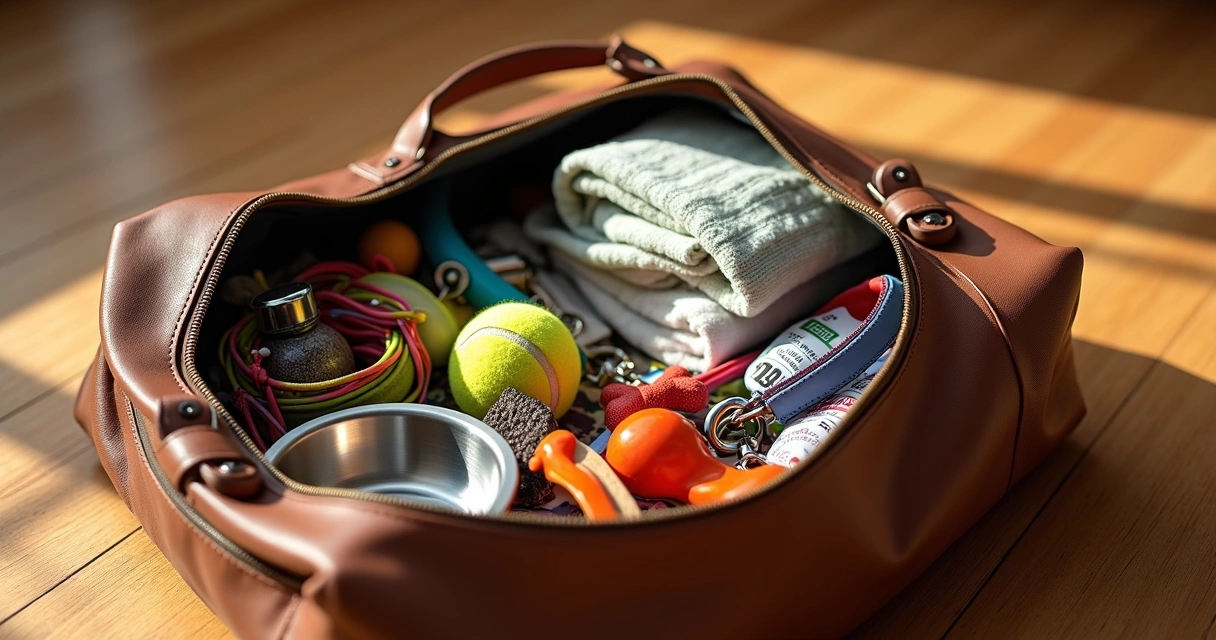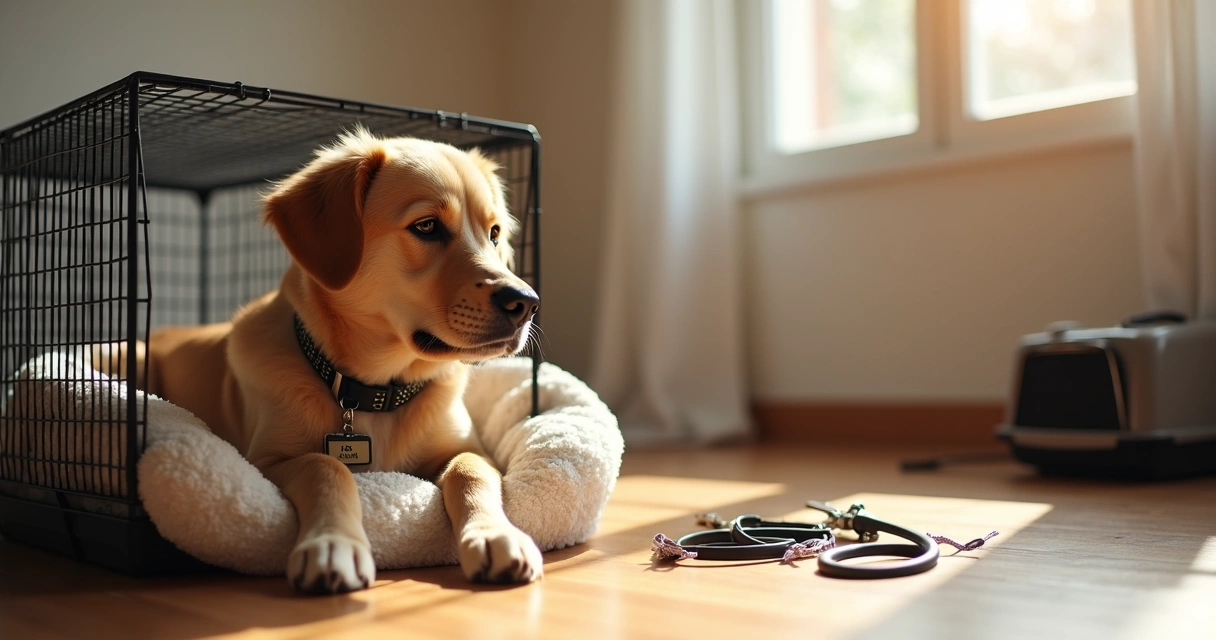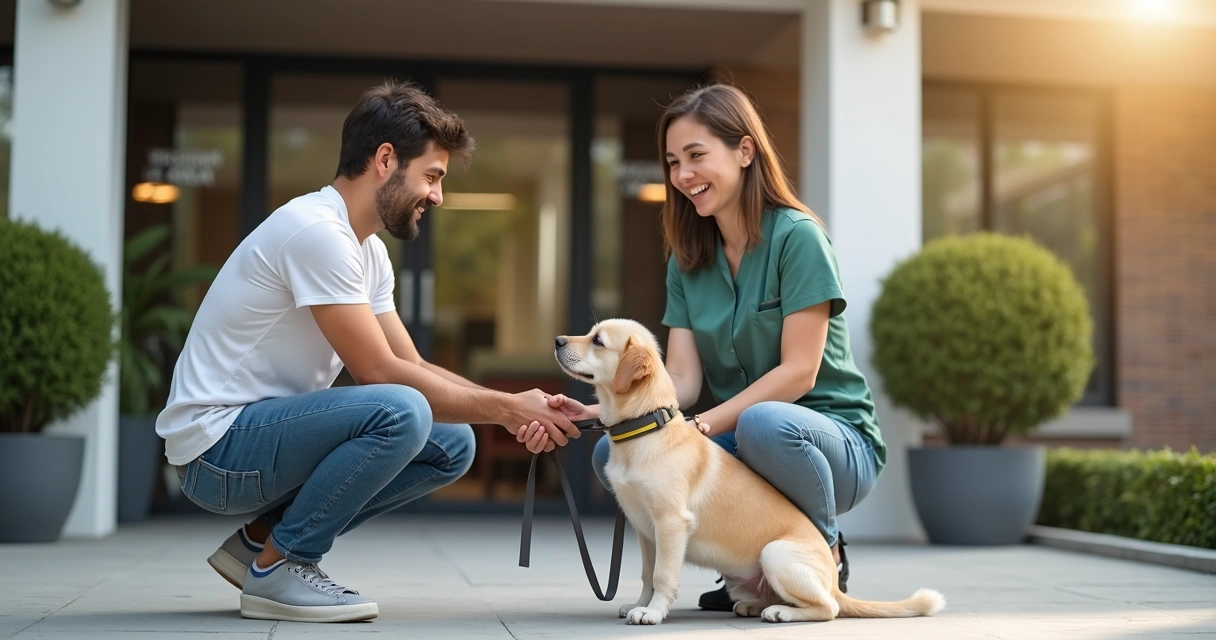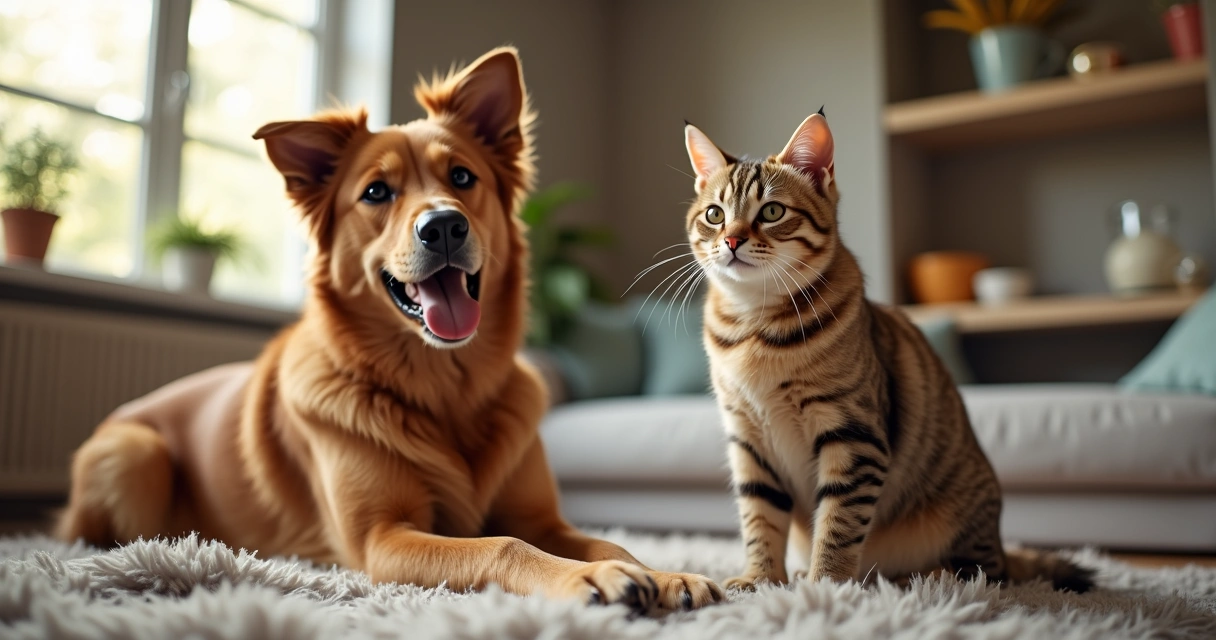It always hits me as I zip up my dog’s bag for daycare or boarding—the pure trust in those eyes, and the hope that I’ve packed just right. Years of sending pets to facilities like Dogtown in Gloucester, MA, has shown me how careful preparation can transform uncertainty into calm, tail-wagging confidence—for both owner and animal. But what exactly should go into that all-important bag? It’s not about packing everything they own; it’s about what truly fits their routine, comfort, and safety.
The small things can mean the most.
Understanding your pet’s needs
Every pet is different. Some dogs can adapt on the fly, crashing on any blanket, chasing any ball; others cling to their routines and favorite items. As I learned through dozens of drop-offs, knowing your pet’s habits and sensitivities will always guide you in packing their bag. If your cat hides without a familiar blanket or your dog gets anxious without a specific toy, those items go first in the bag.
According to U.S. Bureau of Labor Statistics data, Americans dedicate not just money but also care and attention to pet services. Over 9% of annual pet spending is on care services such as boarding and daycare. That means a lot of pets, and a lot of variance in what comforts them. At a facility like Dogtown, where individualized support is a core value, staff are experienced at adapting routines to each pet’s needs.
Health and safety: The top priorities
I have always found that packing for health and safety is non-negotiable. Here’s what I include:
- Vaccination records: Most reputable facilities require proof of up-to-date vaccinations. Think of them as your pet’s passport—non-negotiable for entry, and also for their health and for the safety of other animals. Facilities like Dogtown go further, offering pre-enrollment assessments to optimize everyone’s safety and well-being.
- Medication and instructions: If your pet takes medication, pack it in original containers with clear dosage notes. I tape instructions to the bag for clarity. Make sure the name matches the intake form.
- Flea and tick prevention: Many facilities, Dogtown included, check this before each stay.
- Emergency contacts: Always have a contact number other than your own. Sometimes, a backup plan is peace of mind.
Preparedness is kindness—your pet feels it, too.
The guidelines from Oklahoma State University highlight how professional facilities are equipped to spot issues fast—but your detailed information can be the difference between a minor hiccup and a bigger problem.
Food, water, and routine comfort
From what I’ve seen, even pets with iron stomachs can get fussy about diet under stress. I always pack:
- Enough of their regular food for the full stay, plus an extra meal or two just in case. Sudden diet changes are tough on animals.
- If your pet has allergies or a strict diet, pre-portion meals in labeled bags or containers. I write their name and feeding instructions, front and center.
- Favorite treats (in moderation) can help with comfort, training, or just a little reassurance.
- Ask about water—at Dogtown, stainless bowls are provided and kept fresh, so outside bowls aren’t necessary unless your pet has a medical need or specific attachment to their own.
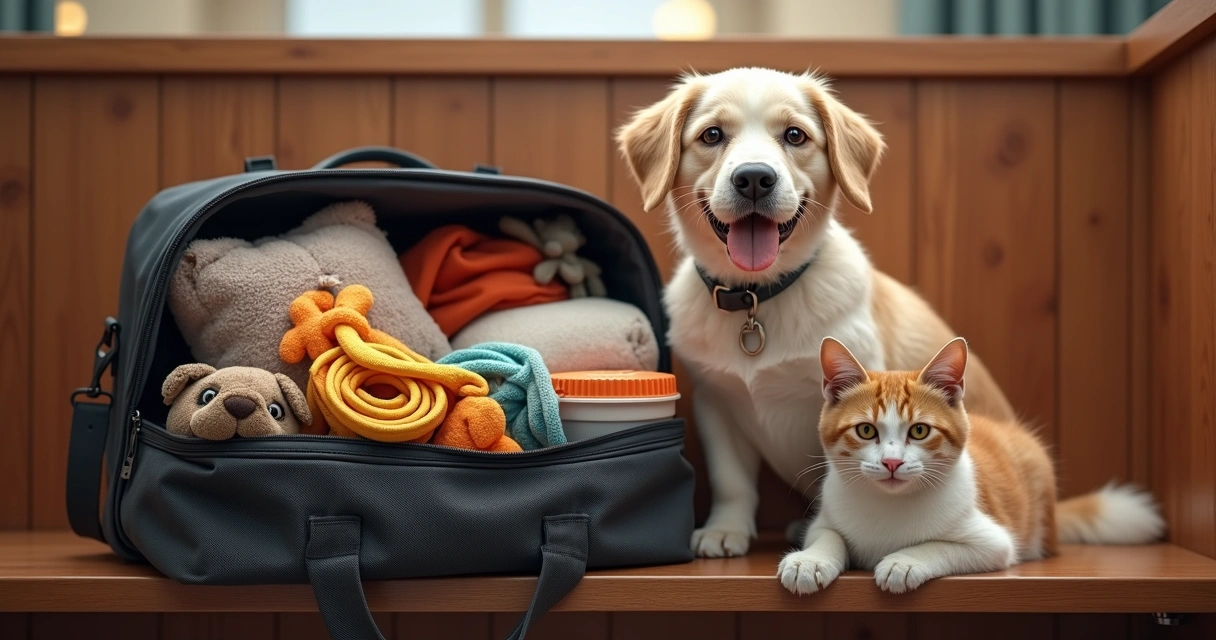
The comfort of home: Bedding and personal items
During boarding, or even just a long daycare day, a few smells or textures from home go a long way toward soothing nerves. What comes with me?
- Bed or favorite blanket: Even at a facility with comfy bedding, pets relax when surrounded by their own scents. Especially if they’re used to nesting or burrowing.
- An item carrying your scent—an old t-shirt or pillowcase. I swear my dog actually snoozes deeper with a piece of my laundry nearby.
This section of packing is especially relevant for overnight boarding at services like Dogtown’s professional boarding, where pets might spend several nights away from home. The routine of curling up on their own blanket helps maintain restful sleep and reduces anxiety.
Activities, stimulation, and special needs
I sometimes laugh when I catch myself packing my dog’s bag as if preparing a child for camp. But when pets have mental stimulation and comfort, their whole experience shifts. I always consider:
- Favorite toys: One or two sturdy toys keep pets occupied and promote positive behavior. At facilities that offer personalized training or group play, like Dogtown’s training packages, a familiar toy also eases participation.
- Chewable treats or puzzle toys are wonderful for longer stays, especially for dogs prone to boredom or anxiety.
- Noisier toys or those that can break should stay at home—think about the comfort and safety of all the animals present.
Adding a few interactive items supports the kind of exercise arrangement found in studies, such as National Center for Biotechnology Information’s insights on play areas and scheduled walks.
Grooming and hygiene
Whether you’re using grooming add-on packages or handling basics yourself, packing a few items can make a difference:
- Brush or comb for daily comfort—especially for long-haired pets or during shedding seasons.
- Pet wipes for quick cleanups.
- Nail trimmer if your pet needs regular attention.
- Towel for outdoor playday messes.
For some, a groomed pet is just a nice bonus; for others, it’s the difference between a happy pick-up and a tangle of fur. Grooming and cleaning are part of what animal caretakers do at reputable setups, as confirmed by the U.S. Bureau of Labor Statistics report on animal caretakers.
Special notes, quirks, and ongoing care
I always include a note for the staff—not some long-winded biography, but just enough to highlight quirks, likes, anxieties, or “do nots.” For example, if your pet becomes upset in thunderstorms, or is scared of vacuums, a quick sentence gives handlers a heads-up. At Dogtown, personal notes are genuinely welcomed as part of creating a safe, positive environment and supporting personalized care, especially in group settings like their dog daycare services or structured day camps.
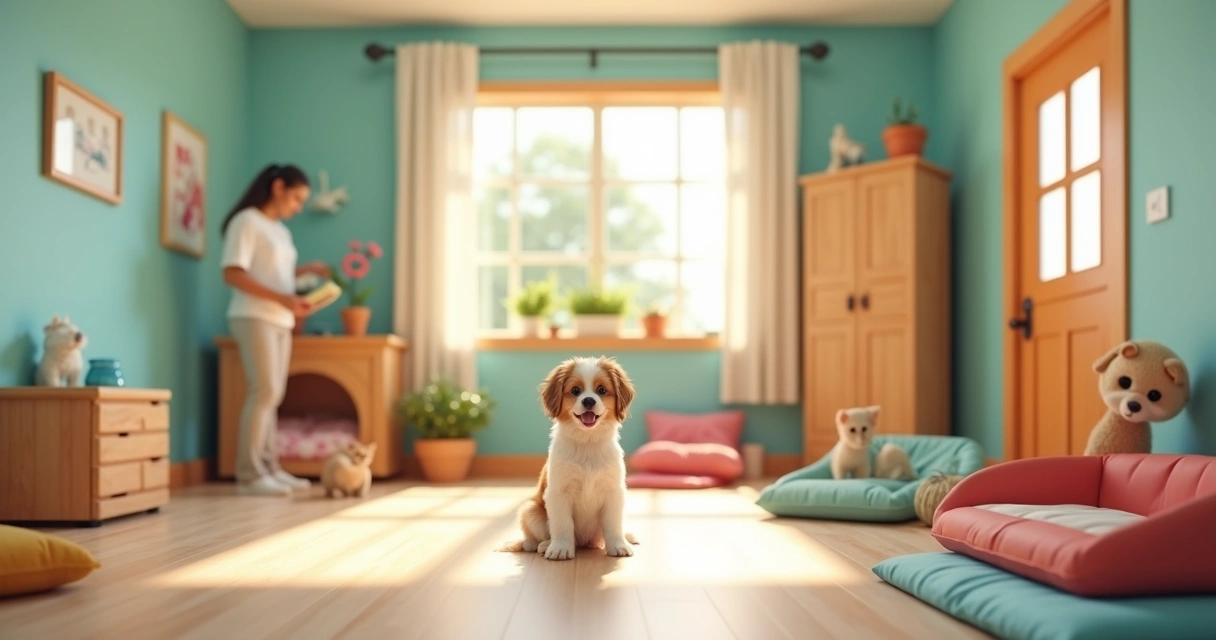
How labeling and organization help
Details save time. Use a permanent marker or stick-on labels for every item—especially food, medications, and bedding. Include both your pet’s name and your last name, along with any specifics (e.g., "Luna: Grain-free, am feeding").
Labeling isn’t just helpful for staff; it makes me feel more in control, even on days when drop-off feels bittersweet.
Clear labels, calm mind.
What not to pack
It took me a while to learn that too much is sometimes worse than too little. Avoid packing:
- Large or unnecessary items (giant beds, big food containers) unless specifically requested.
- Anything irreplaceable or fragile.
- Excessive toys—two is usually plenty.
- Rawhides, choking hazards, or items that can splinter or shred.
Double-check and communicate
I always cross-check my bag the night before. Above all, solid communication with the facility staff helps avoid surprises. If you’re new to a place like Dogtown, take advantage of their pre-enrollment assessments to share details and ask questions.
There’s a balance: enough to reassure your pet and enable the staff, not so much that you overwhelm everyone.
Final thoughts and a gentle nudge
In my experience, the right bag makes all the difference—your pet settles faster, the staff gets a full picture, and you feel less of that pang at goodbye. Facilities like Dogtown have trained teams who genuinely care. And your preparation lets them shine. If you’re curious to see how thoughtful, supervised daycare, engaging boarding, or personalized training could help your pet thrive, reach out for a free pre-enrollment assessment and find your peace of mind—one packed bag at a time.
Frequently asked questions
What should I pack for pet daycare?
For daycare, I recommend packing food (if required), labeled treats, a favorite toy, medications (if needed), and comfort items like a blanket or a small bed. Always include updated contact information and any special notes about your pet’s quirks or needs.
Do pets need their own food and bowls?
Most pets should bring their own food for consistency, unless the daycare provides it and your pet can tolerate a change. At Dogtown, water bowls are always provided and sanitized regularly, so outside bowls aren’t necessary unless it’s for medical reasons.
Is my pet’s bed necessary for boarding?
Bringing your pet’s own bed or favorite blanket helps provide comfort and a sense of security during overnight stays. Facilities like Dogtown offer cozy bedding, but a familiar scent from home has shown, in my experience, to help pets settle more quickly.
How to label my pet’s belongings?
Use stick-on or iron-on labels, or a permanent marker. Clearly write your pet’s name (and your last name if needed) on all containers, bedding, and toys. Detailed labeling helps staff return items and ensure your pet gets exactly what you packed.
Can I bring my pet’s favorite toys?
One or two sturdy, safe toys are perfect for daycare and boarding. Just avoid anything noisy, breakable, or sentimental. Play items help comfort your pet and make their stay much more enjoyable, especially with training and stimulation programs like those at Dogtown.


